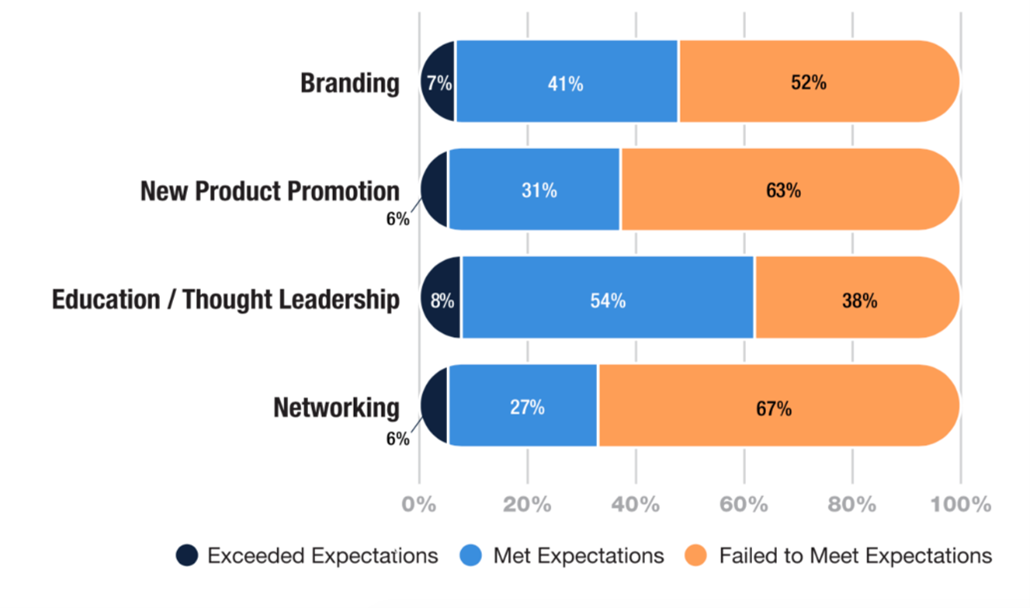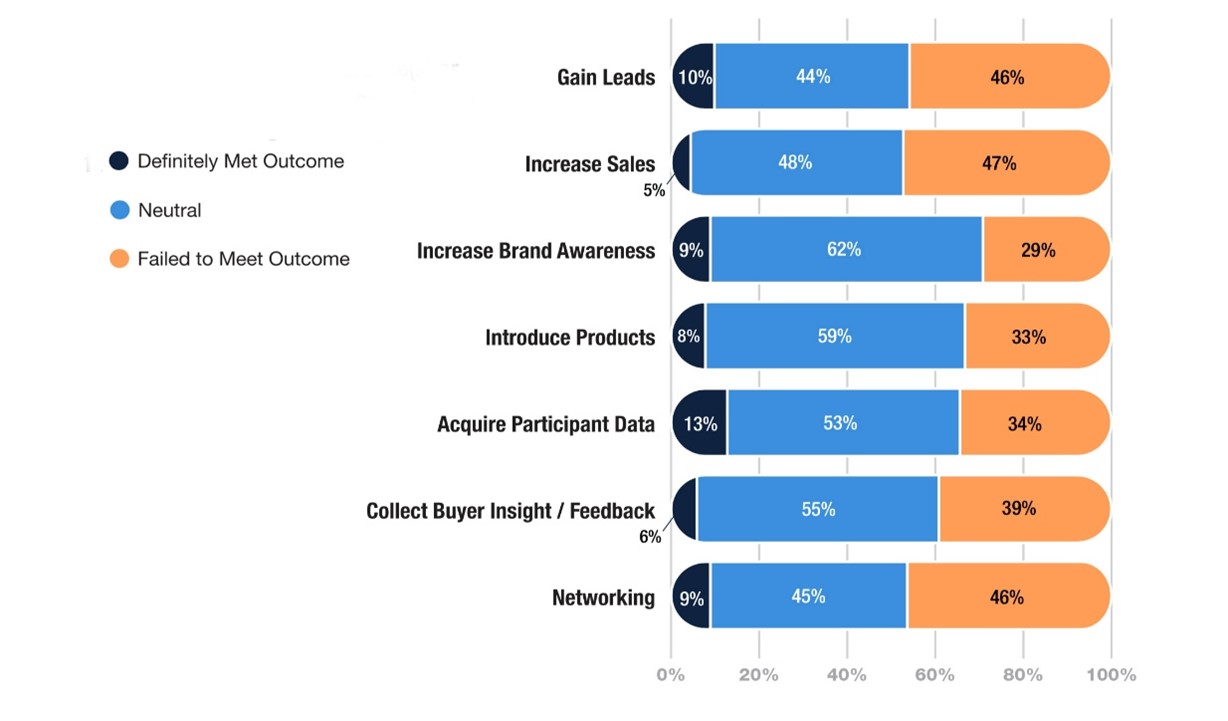
United 2020, the national elevator trade show, was scheduled to be held in Houston in September 2020. Like all other trade shows, organizers were forced to convert the event into a virtual trade show due to Covid-19 restrictions. Trade-show organizers all over the world are working hard to keep exhibitors happy during the coronavirus pandemic—but virtual trade shows largely are missing the mark, according to a new report from Tradeshow Logic.
An August survey from the event-solutions company revealed that many exhibitors are unsatisfied with the level of engagement with customers and prospects these events provide—in fact, 43 percent of exhibitors who have participated in a virtual trade show say they won’t do so again. But the survey also provides much for organizers to consider as they work to improve the exhibitor experience.
Exhibitors thoughts on the engagement opportunities provided by the virtual event platform
The survey results showed that 62% of respondents felt that education and thought-leadership opportunities for exhibitors in the virtual environment met or exceeded expectations. Unfortunately, that’s the only element that got a passing grade.
Respondents’ satisfaction with their options for branding, promoting new products, and networking has a long way to go:

Exhibitors thoughts on the return on investment for the virtual event platform
As for return on investment from virtual events, exhibitors aren’t thrilled. The only ROI to which more than 10 percent of the respondents selected “definitely met outcome” was “acquire participant data.” That may not be a surprise, as virtual-meeting attendance numbers have been especially strong through the pandemic. For many, however, it
seems that high attendance didn’t translate into gaining leads and increasing sales:

Our Experience
Overall, the NAEC staff did a great job coming up with a technical platform to host United 2020 that mimicked an in-person trade show. We were cautiously optimistic and hopeful that the virtual show would be as successful for us as the in-person show is every year.
We defined success at United 2020 to be one-on-one video conversations that would give us the same experience of deep dive customer engagement we had at the in-person trade show. Our goals were to increase the new prospects in our pipeline, and get an understanding of the buying drivers, as well as to further enhance our connection to our existing prospects. For us, our goals were not reached with the biggest problem being that attendees did not engage with us at our booth. The booth was available 24 x 7 for 30 days after the show and we had no follow up traffic during that time. We put a lot of time and effort into our show specific landing pages and product videos. While the cost of exhibiting was slightly less, as well as saving travel costs and the time associated with travelling to a live event, the results did not make it worthwhile. After speaking with other exhibitors, not only at United 2020, but at other virtual shows as well, we knew we were not the only ones to experience this.
The survey identified four key challenges for exhibitors transitioning from carpet and drape to clicks and pixels:
- Not enough time to prepare content
- The challenge of learning multiple virtual-event platform technologies
- Lack of participation inside the virtual exhibit hall and minimal engagement with attendees
- The need to find new ways to convey the value of their products or services in order to connect with prospects
Tradeshows exist to provide a forum for networking, education and new product and service introduction. They are arguably one of the most challenging events to virtualize. They’re built entirely around the in-person experience — including people’s ability to walk around from one booth to the next and engage in constant, often unplanned interactions with both exhibitors and each other.
The virtual experience must evolve to meet these demands; it must offer stronger buyer-seller connections and 1:1 engagement opportunities in order to satisfy participants and generate expected ROI.
The full survey report can be downloaded here.
FIELDBOSS stays current on industry trends to keep you informed on what’s happening in the field service world. Read our blog and sign up for our newsletter for all the latest news.